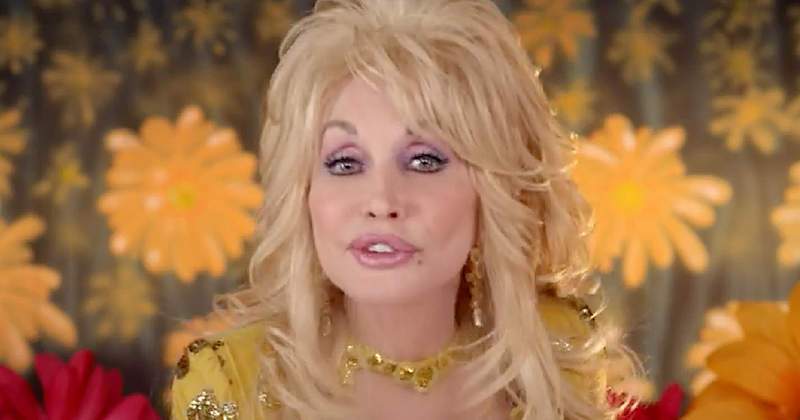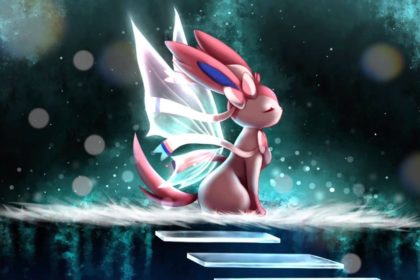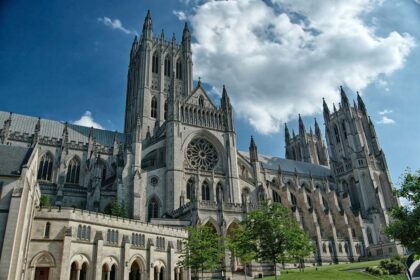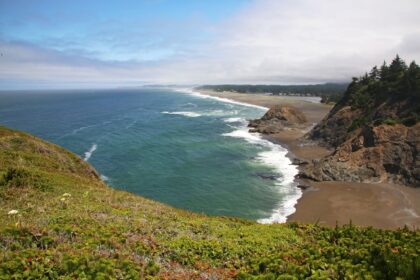Dolly Rebecca Parton is an American singer, songwriter, multi-instrumentalist, record producer, actress, author, businesswoman, and humanitarian, known primarily for her work in country music. After achieving success as a songwriter for others, Parton made her album debut in 1967 with Hello, I’m Dolly. With steady success during the remainder of the 1960s, her sales and chart peak came during the 1970s and continued into the 1980s. Take a look below for 40 more awesome and interesting facts about Dolly Parton.
1. Parton was born in January 19, 1946, in a one room cabin on the banks of the Little Pigeon River in Pittman Center, Tennessee, a very small community in Sevier County in the Great Smoky Mountains of East Tennessee.
2. She is the fourth of 12 children born to Avie Lee Caroline and Robert Lee Parton Sr.
3. Mr. Parton (known as “Lee”) worked in the mountains of east Tennessee, first as a sharecropper and later tending his own small farm and acreage. He also worked temporary side jobs to make ends meet. He was illiterate.
4. Despite his lack of formal education, Parton has said that he was one of the smartest people she has known.
5. Avie Lee was homemaker for the large family. Her 11 pregnancies (the tenth being twins) in 20 years made her a mother of 12 by age 35. Often in poor health, she still managed to keep house and entertain her children with songs and tales of mountain folklore.
6. Avie Lee’s father, Jake Owens, was a Pentecostal preacher, so Parton and her siblings all attended church regularly.
7. Parton has long credited her father for her business savvy, and her mother’s family for her musical abilities.
8. While she was still very young, Dolly Parton’s family moved to a farm on nearby Locust Ridge. Most of her cherished memories of youth happened there, and it is the place about which she wrote the song “My Tennessee Mountain Home” in the 1970s.
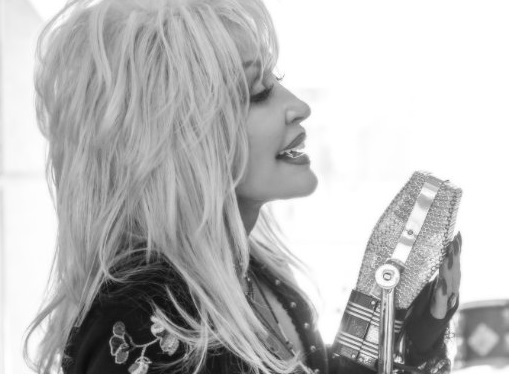
9. Parton bought back the Locust Ridge property in the 1980s.
10. Two of her siblings are no longer living; Larry died shortly after birth in 1955, and Floyd died in 2018.
11. Dolly Parton’s middle name comes from her maternal great-great-grandmother Rebecca (Dunn) Whitted. She has described her family as “dirt poor.”
12. Parton’s father paid the doctor who helped deliver her with a bag of cornmeal. She outlined her family’s poverty in her early songs “Coat of Many Colors” and “In the Good Old Days (When Times Were Bad)”.
13. They lived in a rustic, one-room cabin in Locust Ridge, just north of the Greenbrier Valley of the Great Smoky Mountains, a predominantly Pentecoasteal area.
14. Music played an important role in her early life.
15. She was brought up in the Church of God (Cleveland, Tennessee), the church her grandfather, Jake Robert Owens, pastored.
16. Her earliest public performances were in the church, beginning at age six. At seven, she started playing a homemade guitar. When she was eight, her uncle bought her first real guitar.
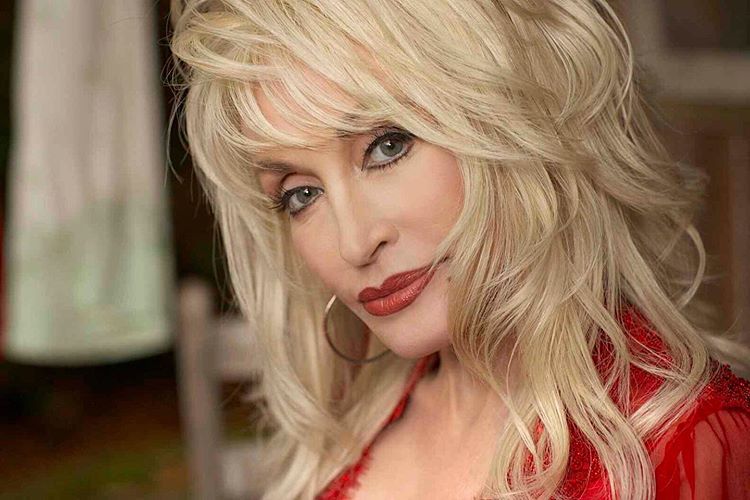
17. Parton began performing as a child, singing on local radio and television programs in the East Tennessee area.
18. By ten, she was appearing on The Cas Walker Show on both WIVK Radio and WBIR-TV in Knoxville, Tennessee. At 13, she was recording (the single “Puppy Love”) on a small Louisiana label, Goldband Records, and appeared at the Grand Ole Opry, where she first met Johnny Cash, who encouraged her to follow her own instincts regarding her career.
19. After graduating from Sevier County High School in 1964, Parton moved to Nashville the next day.
20. Her initial success came as a songwriter, having signed with Combine Publishing shortly after her arrival; with her frequent songwriting partner, her uncle Bill Owens, she wrote several charting singles during this time, including two top-10 hits: Bill Phillips’s “Put It Off Until Tomorrow” (1966] and Skeeter Davis’s “Fuel to the Flame” (1967).
21. Her songs were recorded by many other artists during this period, including Kitty Wells and Hank Williams Jr.
22. She signed with Monument Records in 1965, at age 19; she initially was pitched as a bubblegum pop singer.
23. She released a string of singles, but the only one that charted, “Happy, Happy Birthday Baby”, did not crack the Billboard Hot 100. Although she expressed a desire to record country material, Monument resisted, thinking her unique voice with its strong vibrato was not suited to the genre.
24. After her composition “Put It Off Until Tomorrow”, as recorded by Bill Phillips (with Parton, uncredited, on harmony), went to number six on the country chart in 1966, the label relented and allowed her to record country.
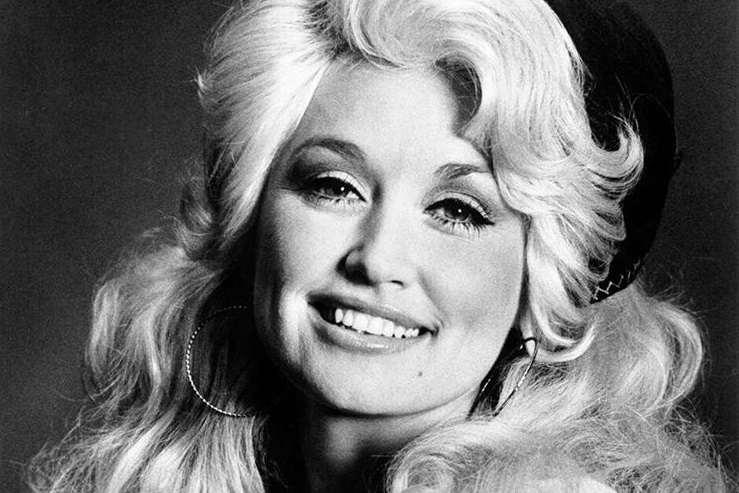
25. Her first country single, “Dumb Blonde” (composed by Curly Putman, one of the few songs during this era that she recorded but did not write), reached number 24 on the country chart in 1967, followed by “Something Fishy”, which went to number 17. The two songs appeared on her first full-length album, Hello, I’m Dolly.
26. In 1998, Nashville Business ranked her the wealthiest country-music star. As of 2017, her net worth is estimated at $500 million.
27. Parton is a prolific songwriter, having begun by writing country-music songs with strong elements of folk music, based on her upbringing in humble mountain surroundings and reflecting her family’s Christian background.
28. In a 2009 interview on CNN’s Larry King Live, she said she had written “at least 3,000” songs, having written seriously since the age of seven. Parton also said she writes something every day, be it a song or an idea.
29. Parton’s songwriting has been featured prominently in several films.
30. As a songwriter, Parton has twice been nominated for an Academy Award for Best Original Song, for “9 to 5” and “Travelin’ Thru” (2005) from the transgender-themed film Transamerica.
31. Parton invested much of her earnings into business ventures in her native East Tennessee, notably Pigeon Forge.
32. She is a co-owner of The Dollywood Company, which operates the theme park Dollywood (a former Silver Dollar City), a dinner theater, Dolly Parton’s Stampede, the waterpark Dollywood’s Splash Country, and the Dream More Resort and Spa, all in Pigeon Forge.
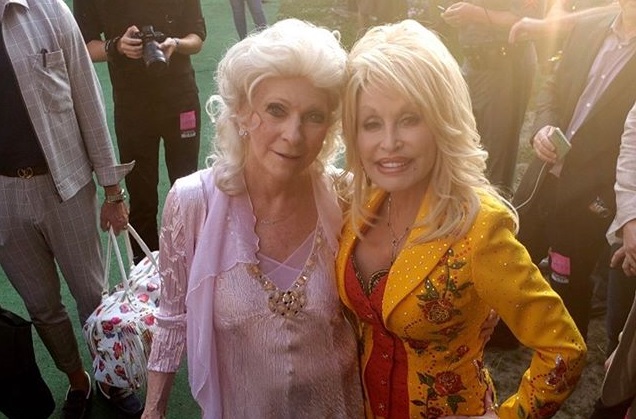
33. Dollywood is the 24th-most-popular theme park in the United States, with 3 million visitors per year.
34. In addition to her performing appearances on The Porter Wagoner Show in the 1960s and into the 1970s, her two self-titled television variety shows in the 1970s and 1980s, and on American Idol in 2008 and other guest appearances, Parton has had television roles.
35. In 1979, she received an Emmy award nomination as “Outstanding Supporting Actress in a Variety Program” for her guest appearance in a Cher special.
36. In her first feature film, Parton portrayed a secretary in a leading role with Jane Fonda and Lily Tomlin in the comedy film 9 to 5 (1980). The movie highlights the discrimination of women in a working environment and created awareness of the National Association of Working Women (9–5).
37. In late 1981, Parton began filming her second film, the musical film The Best Little Whorehouse in Texas (1982). The film earned her a second nomination for a Golden Globe Award for Best Actress – Motion Picture Musical or Comedy.
38. In 1989, she returned to film acting in Steel Magnolias (1989), based on the play of the same name by Robert Harling. The film was popular with critics and audiences, grossing over $95 million inside the U.S.
39. On May 30, 1966, Parton and Carl Thomas Dean (born July 20, 1942, in Nashville, Tennessee) were married in Ringgold, Georgia.
40. Parton and Dean helped raise several of Parton’s younger siblings in Nashville, leading her nieces and nephews to refer to her as “Aunt Granny,” a moniker that later lent its name to one of Parton’s Dollywood restaurants. The couple have no children of their own, but Parton is the godmother of performer Miley Cyrus.

